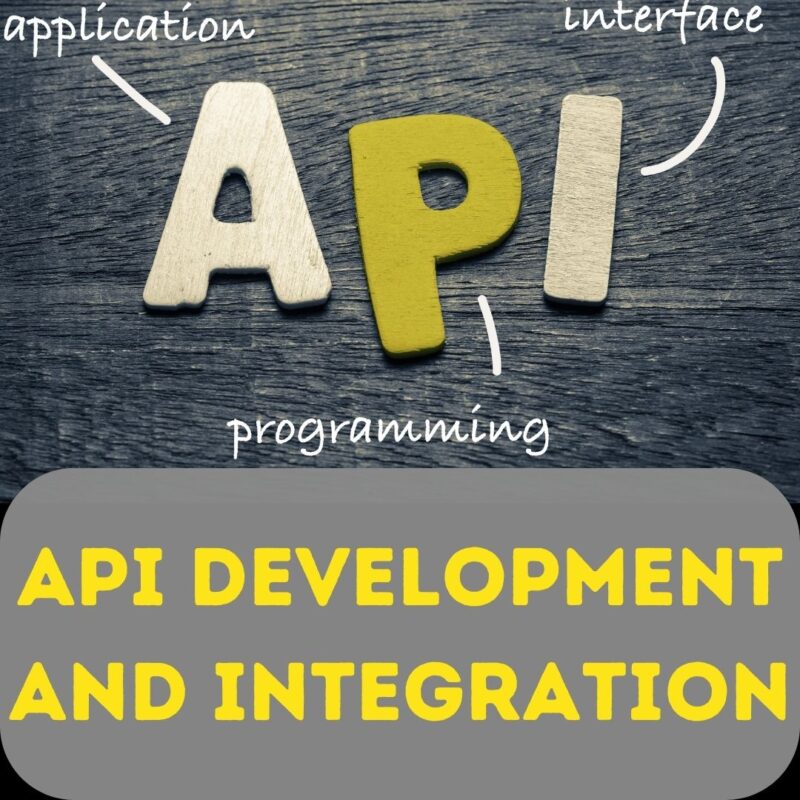Application Programming Interfaces (APIs) have become the unsung heroes of the digital age, powering the interconnected web we navigate daily. They serve as bridges between different software systems, allowing them to communicate, share data, and provide enhanced functionalities. In this comprehensive exploration, we will delve into the pivotal role of APIs in web applications, the process of developing them, and the art of effective integration.
1. Introduction to APIs
What is an API?
An Application Programming Interface (API) is a set of rules and protocols that allows one software application to interact with and request services or data from another. APIs define the methods and data formats that applications can use to communicate, serving as intermediaries that facilitate seamless interactions between different software systems.
The Ubiquity of APIs in Our Digital Lives
APIs have become an integral part of our digital experiences, enabling us to do everything from checking the weather on our smartphones to making online payments and sharing content on social media. Their ubiquity has fundamentally reshaped how software systems work together, making our interconnected digital world possible.
2. The Role of APIs in Web Applications
Enhancing Functionality
APIs expand the capabilities of web applications by allowing them to tap into external services and resources. For example, a weather application can integrate with a weather API to provide real-time forecasts and updates.
Facilitating Data Sharing
APIs enable data sharing between applications, making it possible for platforms like Google Maps to display location data within other apps. This sharing of information enhances user experiences and functionality.
Enabling Third-Party Integration
APIs empower third-party developers to integrate their services with existing applications. Popular social media platforms, for instance, offer APIs that allow developers to create applications that interact with users' social accounts.
3. Types of APIs
RESTful APIs
Representational State Transfer (REST) APIs use HTTP methods (GET, POST, PUT, DELETE) to perform operations on resources. They are known for their simplicity, scalability, and widespread adoption on the web.
SOAP APIs
Simple Object Access Protocol (SOAP) APIs are protocol-based and use XML for message formatting. They are often used in enterprise environments where strict security and reliability are essential.
GraphQL APIs
GraphQL APIs provide more flexibility by allowing clients to request only the data they need. They reduce over-fetching and under-fetching of data, improving efficiency and reducing bandwidth usage.
4. API Development
Planning and Design
API development begins with thorough planning and design. Developers define the endpoints, data structures, and authentication mechanisms. A well-designed API sets the stage for smooth implementation and integration.
Implementation
During implementation, developers write the code that powers the API. They define the routes and functionality for each endpoint, ensuring that the API behaves as intended.
Testing and Documentation
Rigorous testing is crucial to verify the API's functionality and identify and resolve any issues. Documentation is equally vital, providing clear instructions on how to use the API and its endpoints.
5. API Integration
The Integration Process
API integration involves incorporating an external API into an existing application or system. Developers must understand the API's documentation, endpoints, and authentication methods.
Authentication and Security
APIs often require authentication to ensure data privacy and security. Developers must implement proper authentication mechanisms, such as API keys, OAuth, or JWT, and safeguard against potential security vulnerabilities.
Best Practices for Integration
Effective API integration relies on best practices like error handling, rate limiting, and caching to optimize performance and maintain a responsive application.
6. API Management and Governance
The Need for Governance
API management and governance involve overseeing the entire API lifecycle, from development to retirement. It ensures that APIs align with organizational goals, comply with regulations, and maintain high standards of quality.
API Documentation and Developer Portals
Well-documented APIs are more accessible to developers, encouraging adoption and integration. Developer portals provide a central hub for API documentation, code samples, and resources.
7. Real-World API Use Cases
Social Media Integration
Social media platforms like Facebook, Twitter, and Instagram offer APIs that allow developers to integrate social sharing, login, and user profile features into their applications.
Payment Gateways
Payment gateway APIs enable e-commerce websites to securely process transactions, allowing users to make purchases online with confidence.
Geolocation Services
Geolocation APIs, such as Google Maps API, enable applications to provide location-based services like finding nearby restaurants, tracking delivery orders, and navigating through maps.
8. Future Trends in API Development and Integration
Serverless APIs
Serverless architecture abstracts server management, allowing developers to focus solely on code. Serverless APIs offer scalability and cost-efficiency benefits.
AI-Driven APIs
AI and machine learning APIs are becoming more prevalent, providing access to advanced capabilities like natural language processing, image recognition, and recommendation engines.
IoT Integration
As the Internet of Things (IoT) grows, APIs will play a vital role in connecting and controlling smart devices, ranging from thermostats to wearable gadgets.
9. Conclusion
APIs are the hidden threads that weave the fabric of our digital world. They enable web applications to tap into a vast ecosystem of services, data, and functionality, enhancing our online experiences and capabilities.
As we continue to navigate the ever-evolving digital landscape, the role of APIs will only become more prominent. Their seamless integration and data-sharing capabilities will continue to empower innovation, enabling us to create a more interconnected, efficient, and dynamic digital future.
